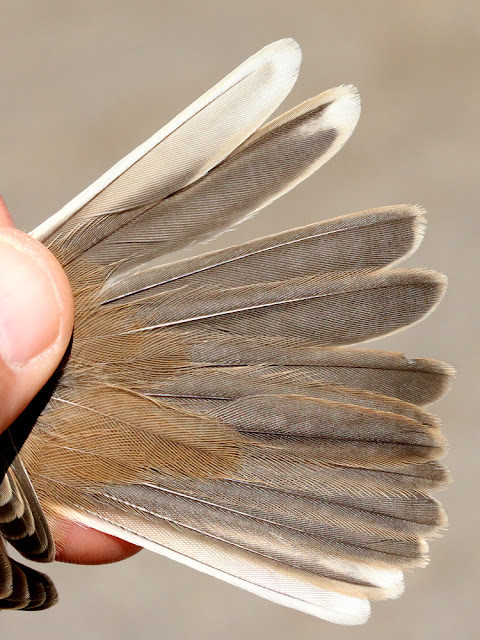Carrying on from yesterday's musing on Whitethroats, today we trapped another nice adult that further illustrated their pale - in this case verging on orange - iris:
Adults are quite odd in as much they very often arrest/suspend moult in the secondaries (and occasional in other feather tracts as well) during their otherwise complete post-breeding moult; today's bird - a male by the look of it - has left the penultimate inner secondary unmoulted:
Here's another adult - likely a female - that's moulted all of its flight feathers but looks to have left some of the lesser coverts unmoulted. Incidentally, compare the tertials of these birds with those of the Kenyan bird - a rubicola? - we posted yesterday; as far as we know there aren't any accepted records of 'eastern' Whitethroats for Britain but any of the forms could surely occur and a vagrant with tertials anything like this ought to stand out like a sore thumb:
We're not great fans of giving too much weigh to feather shape as an ageing criteria - give us an unambiguous plumage difference any time! Feather shape is often a useful back-up feature but it seems to be one of those things that the more you look the more you find exceptions to what ought to be the rule - today's Whitethroat featured above had just the right colour pattern to its tail feathers but the outer ones at least were oddly pointed...
...and quite unlike the broad, round-ended shape expected in a text-book adult like this one from earlier in the week:
And for comparison here are a couple of tails of youngsters from this week © Martin Cade:







